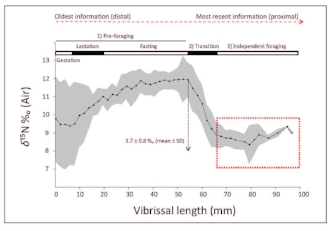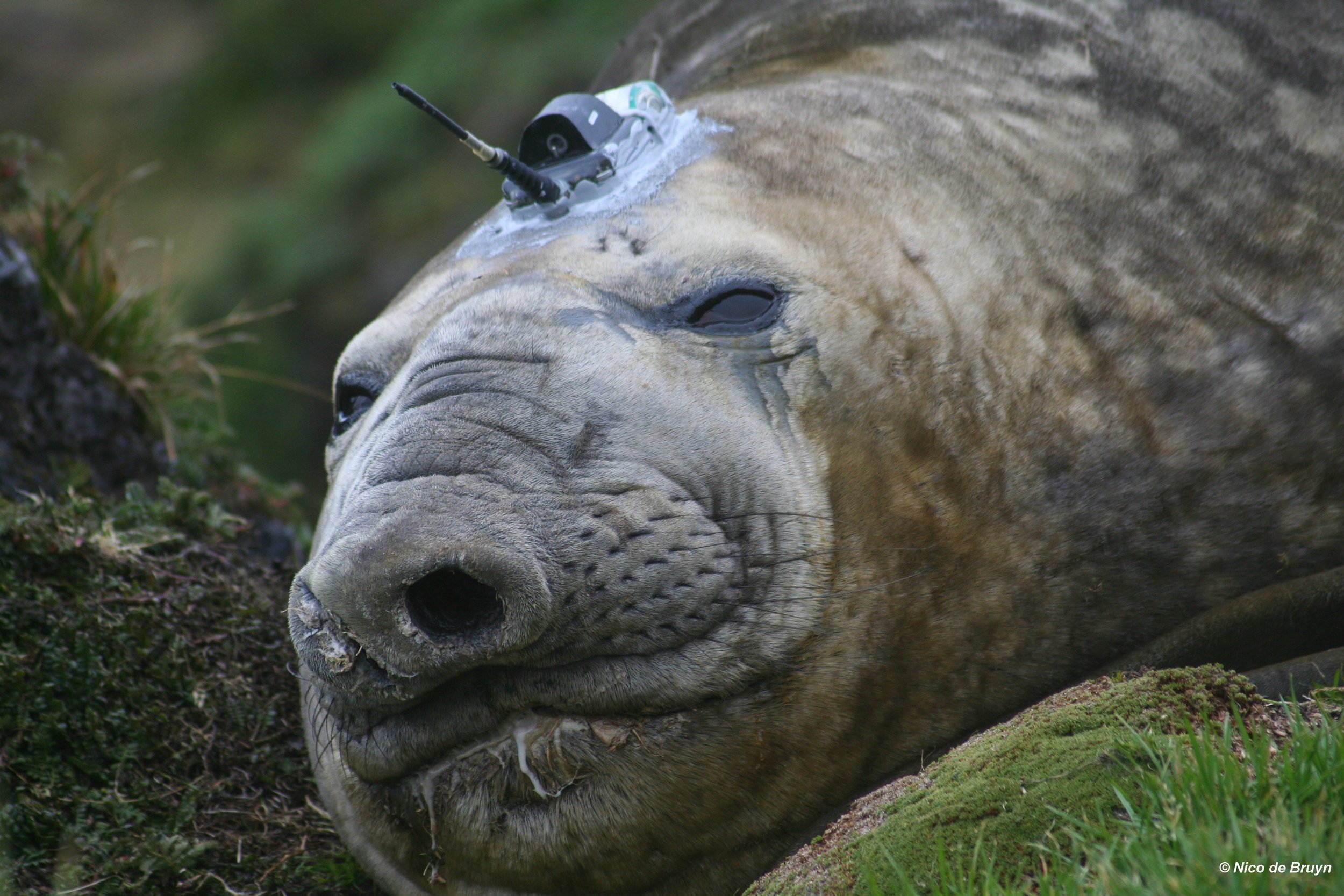Getting to the tip of the whisker…. Confirming the crustacean-based diet of juvenile southern elephant seals Mirounga leonina
/How large is the contribution of crustaceans (krill) to the diet of juvenile southern elephant seals (SES) at the Subantarctic Marion Island?
Whiskers tell us what elephant seals eat.. and when!
Juvenile southern elephant seals Mirounga leonina from Marion Island. Photo credit Nico Lubcker
In this novel paper, we used the nitrogen and carbon stable isotope values measured chronologically along the length of whiskers sampled from juvenile southern elephant seals Mirounga leonina to test the recent suggestion that they “represent a new krill predator within the Southern Ocean” (Walters et al. 2014). Stable isotope analysis is based on the principle ‘you are what you eat’, and we have reconstructed the diet of juvenile SES based on the biomolecule composition of their whiskers. This paper follows from an earlier study that quantified the regrowth rate of the whiskers sampled from the juvenile SES (Lübcker et al. 2017). This first, time-integrated dietary reconstruction of juvenile SES at Marion Island showed that they consumed prey from a lower trophic level than previously assumed.
Fig. 2. Representation of data indicating the 3 isotopically distinct portions of the vibrissal regrowths collected from juvenile southern elephant seals Miro - unga leonina. Life history events can be distinguished based on δ15N (mean ± SD) measured along the length of the vibrissae. The onset (indicated by the arrow) of the independent foraging (transitioning period) is characterised by a 3.7‰ δ15N depletion and we used only the period representing independent foraging for dietary reconstruction (red box). The solid black line with grey error bands represents the 15N mean ± SD of all the sampled juveniles
The depleted stable isotope values of nitrogen (δ15N) (8.5 ± 0.6‰) measured in their whisker during the independent foraging period confirmed that up to 76% of their diets consisted of crustaceans, presumably Subantarctic krill species. This is contrary to earlier studies which suggested that they consumed mostly lantern fishes and squid. This first utilisation of the isotopic values captured along the length of whisker regrowths confirms the inclusion - and importance - of crustaceans in the diet of juvenile SES and has important implications for their conservation.
Read the full story here:
Marine Ecology Progress Series https://doi.org/10.3354/meps12240



















